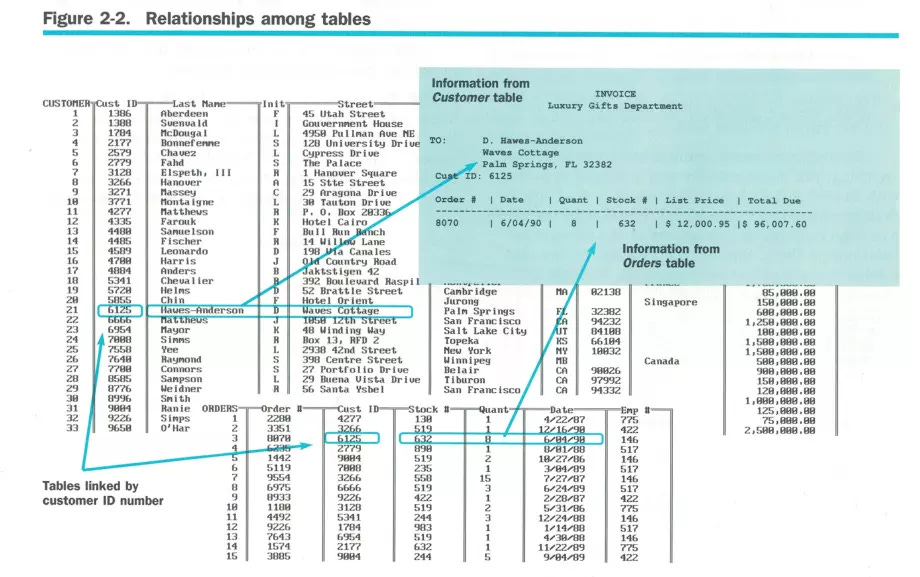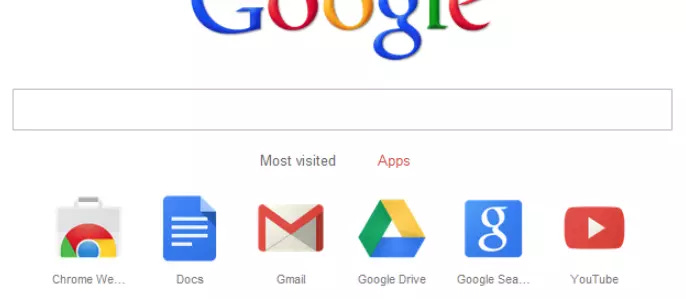Digital Disruptors, Internet Impostors
The trend to impose one-brand solution on all our digital activity provides us with poorer tools for individual tasks
A couple of times in my digital life, I had a feeling that a horde of barbarians invaded, dismissed the present sophisticated culture and superseded it with a new order, ostensibly progressive but effectively detrimental to many fine achievements.
1. Desktop software
My adventure with computers and software started, a toy-like Sinclair ZX Spectrum+ not counting, in the late 80’s, on a dark screen attached to an PC/AT computer, which greeted the user with four grey characters:
C:\>
followed by a blinking, welcoming underscore “_”. And that was it. You had a keyboard, some knowledge of DOS1 commands, and the dialogue with the machine could begin.
Programs (today we say “applications”, but these days, pieces of software were called “programs”) run in text mode, could switch to graphical presentation (called “WYSIWYG”, What You See Is What You Get) only on demand, could not exchange data by “drag and drop”, and relied on other visual tricks than colour to show focus, the controls and the menus. Despite the austere environment, the software from this era was quite powerful and handy. There were diligently engineered programs, meticulously tested before launching, and above all, exhaustively documented.

The guides comprised not only tutorials, how to operate the software itself, but summarised and reminded about the maths and logic behind the procedures the software was intended to streamline.
It was perhaps the quality, accessibility and comprehensiveness of the documentation which encouraged me to try and write, in Paradox Application Language, a simple database for a shop. My brother-in-law, then a fledgling entrepreneur, used it successfully for a year or so, before he afforded a professional, full-featured warehouse and sales management system.
In a similar way, the capabilities of Borland’s spreadsheet Quattro Pro, and the sheer pleasure of working with it while being supported with the comprehensive documentation, fruited in a book, the only one I ever wrote, about macros, pieces of code that could turn a spreadsheet into an even more flexible calculation tool. I edited the whole book in Word Perfect, another software masterpiece from the DOS era, a word processor so effective, that years later, when MS Word became ubiquitous, I could compile comparable texts, structured well into chapters and indexed, only with mature, high-numbered versions of the software.

I got a job in mechanical engineering, and my career went this way. During long years of working in the industry, my abstract and maths-oriented thinking shrivelled gradually. The book written and the program coded remained adventures of a young, searching mind. Not without a legacy: dabbling in script languages of Paradox and Quattro Pro helped me at work to utilize LISP2 for AutoCAD and PythonScript for Rhinoceros3.
The 90’s were the era of Microsoft’s rise. They made a new operating system, capable of multitasking and communicating with the user via a colourful graphical interface. On the flip side, whoever dealt with programming, complained about poor documentation and obscure Windows registry. A friend of mine, by then a graduate in IT and working as a software tester, asked rhetorically: “Could you imagine how an operating system could look like, if Borland made it?”

In the wake of the new operating system, Microsoft started to push their own word processor, spreadsheet and database, a set of software pieces wrapped in a catchy term “Office”. Were the new programs more powerful, more flexible, well-documented and bug-free? By no means. Maybe a bit easier to use for beginners, because of the graphical user interface. But it took them years, and several upgrade versions, to catch up with the intricacies of the old, well-developed software. Now, MS Office is a good package, I admit; but should Microsoft have encroached the territory outside the operating system, in the first place?
Was the move to deliver the “suites” of software from one brand, an evolution, or a revolutionary change? I am in favour of the second opinion. The shift was in fact a reversal of motives. The paradigm “Let’s do what we are good at and passionate about, what we know well and are experienced in, make and deliver a mastered product, and as a result, benefit from it” gave way to a new one: “Make and launch everything we need to seize the largest possible share of the market”. The era of craft was passing away, the reign of market pressed with clamour. It did not happen by chance that WordPerfect, QuattroPro and Paradox ended up as castaways on the same sparsely populated island of Corel Suite. They shared some common traits.

2. The Web and the Mail
Everyone of us had their favourite web browser. Was it an adventure-hinted, nautical in its look and feel Netscape Navigator, or shrewd rather than sly Mozilla Firefox, or multi functional Opera compared to James Bond’s Aston Martin; today, the differences have blurred. All these early browsers were of the same species, because they stemmed from the same incentive. Their makers strove to “deliver the best internet experience possible”, and every one of them found users, who for this reason or another, liked just this tool more than any other. It was before one maker aimed to target us all.
If the way we liked to browse the web reflected our tastes, we paid even more attention to the way to how our letters were handled. To type into a luminescent window what we used to write in longhand on paper was to entrust the new electronic receptacle, a drawer and the post office all in one, with something precious, intimate, not to be disclosed to strangers. E-mail clients aimed to be either more reader-friendly or allowed more technical tinkering, differed in aesthetics, but they all were what they were named: clients, non-intrusive tools for us. It was unimaginable that any creator behind the software could collect and process everything we typed in!
3. The Appropriation
It must have been at the end of the first decade of this century, when the news struck me with the premonition of a major change, uncontrollable, unstoppable and harmful. Google launched its own web browser, Chrome. It was not just another browser on the market, the writing was on the wall: the era of our privacy, subjectivity, and agency over our data was over. The beautifully engineered software was being pushed into niches.
Who and why would offer you the biggest email storage for free? Only those, who predicted how precious in a decade or so would the gigabytes of data multiplied by the millions of users be.
By then, Google owned a popular search engine, contentious, but effective, and offered free email service with the storage size greater than any other provider. Who and why would offer you the biggest email storage for free? Only those, who predicted how precious in a decade or so would the gigabytes of data multiplied by the millions of users be. Now, happy with the new easy browser which featured “the only worth using” search engine and naturally pointed to the “free” email, we, the global users of the internet, started feeding the behemoth with our searches, queries and correspondence. To revert our sight from anything other than the world of Google for good, they even worked out a semblance of an “Office Suite”, a toy rather than a tool, but in use at many companies.
4. My dream digital world is…
… diverse. People throughout the world using different platforms, variety of browsers, specialized search engines. All compliant with universal web standards (HTML, CSS) for interchangeability. For every single task I do on my computer, I would like to use a tool of my choice, better tailored to my needs, the one I like for any, technical or aesthetic reason. Work with software that serves, not exploits me. In a professional workshop, you will not find a Swiss army knife; there are disparate tools for different purposes. The diversity of software used and dissipation of our digital activity is the best remedy against the hegemony of the Big Tech. And to make our time on the screen more wholesome, too. To exchange freely data created with different software, there are open standards for documents, graphics, spreadsheets and databases.

The diversity of software used and dissipation of our digital activity is the best remedy against the hegemony of the Big Tech. And to make our time on the screen more wholesome, too.
5. The great missing in my view: Apple
I do not refer to Apple’s software, because I have never used it, and I don’t know it. Here, in Central Europe, computers appeared in the form of PC desktops, powered by DOS and Windows, and I stuck to this line. Rare encounters with Windows versions of software originally developed for Macs have left me impressed with the meticulous graphic design, and respectful accessibility (I mean: they do not treat the user as an idiot). I am aware, that with Apple, the dichotomy “market or craft” is not so clear, because no matter how aggressive their marketing is, no one can deny the artistry in Apple’s products.
From Steve Job’s biography, I remember him saying that “the problem with Microsoft is that they have no taste at all.” For Google, he had much stronger words4.
6. Conclusion
Monoculture, the lack of diversity, turns out to be harmful on every layer of our lives: in farming and manufacturing, in sources of information and platforms to share opinions. By bonding our digital activity with one giant, we harm ourselves, too.
If you have any thoughts on the above, please leave a comment. Your remarks may improve my future writing.
Do you think some of your friends might like it? Feel free to share Eyeore Ponders with them:
Thanks for reading; until next time!
Press “like” if you will, it is the kindest expression of encouragement.
DOS: Disk Operating System by Microsoft, a command-line operating system for PC computers, common in the 80’s until superseded by Microsoft Windows
LISP: LISt Processing programming language
Rhinoceros: 3D modelling software by Robert McNeel & Associates
See Walter Issacson, Steve Jobs, chapters 16 and 39, Simon & Schuster 2011












